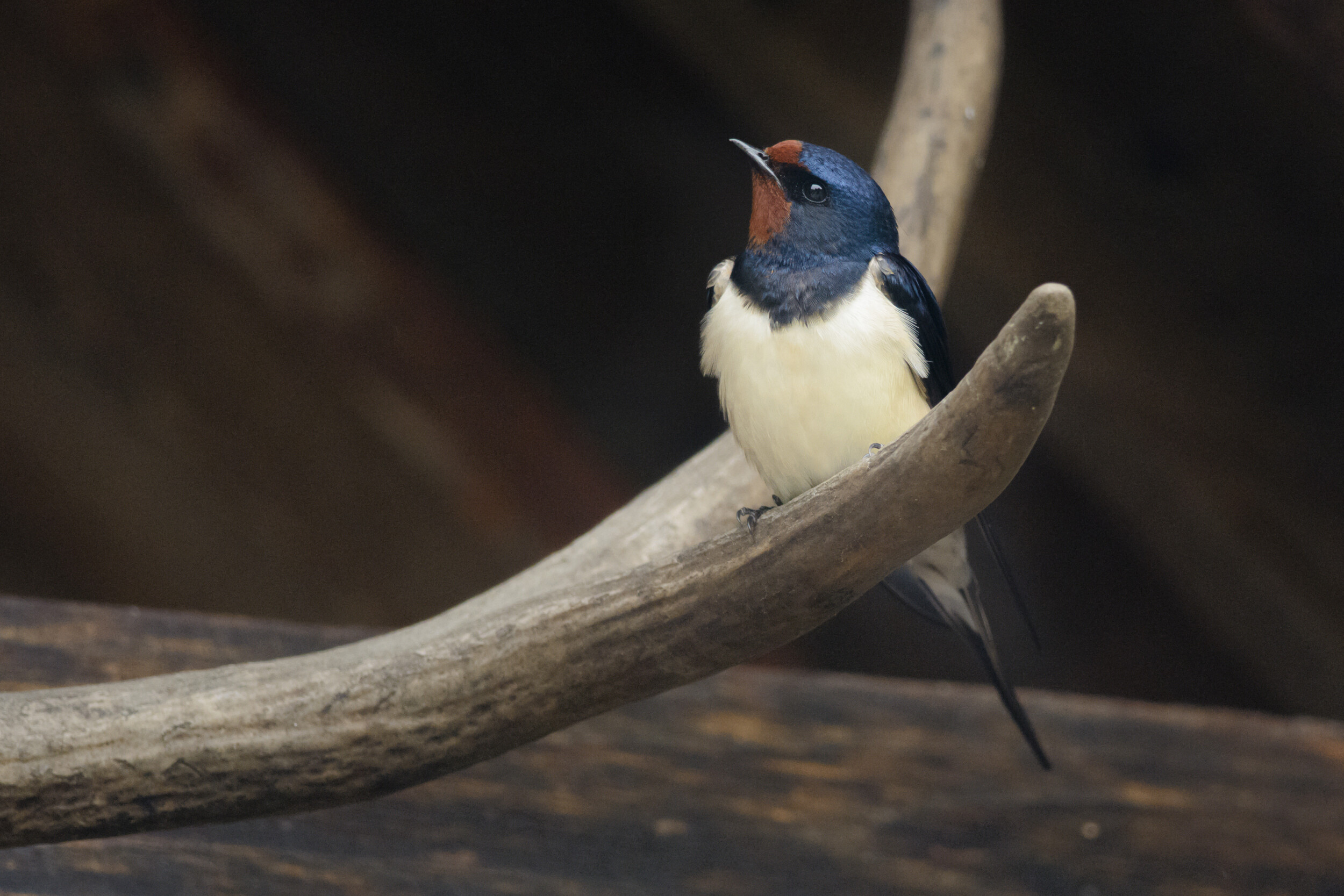Barn swallow
- Barn swallow, Räpina polder
- https://linnuriik.ee/wp-content/uploads/2021/09/Suitsupaasuke_Kaido-Rummel-1024x683.jpg
- Keemu linnud
- https://linnuriik.ee/wp-content/uploads/2021/09/26_Suitsupaasuke_120621aa164234_Rapina-polder.mp3
Barn swallow. Photo: Kaido Rummel
Introduction
Latin Hirundo rustica (L.)
Estonian Suitsupääsuke
Also known as: swallow, common swallow, house swallow, European swallow, Eastern swallow
Status in Estonia
Breeding and migratory bird. National bird of Estonia.
Description
This bird is a swallow with long, pointed wings, a deeply forked tail and long, wire-thin tail feathers. It is glossy bluish black on the top side, white or creamy white below, with a blue-black chest streak and blood red around the throat and forehead. The outer tail feathers of the fanned tail have little white ‘windows’ visible. The flying is fast and strong with sharp wing beats. The juvenile has a short blunt tail, the forehead and under the throat are rusty-creamy white or brownish-pink, with a noticeable blue sheen on the top side.
Size
Body length 17–23 cm (incl. tail feathers 3–6.5 cm), wingspan 29–32 cm, body mass 15–25 g.
Similar species
Western house martin, sand martin.
Distribution
It breeds throughout Eurasia, North Africa and North America. The distribution area in Europe includes the majority of the world’s surface, from the Arctic Circle to Northwest Africa as well as the region between the Middle East and the Yenisei River. It is a common human companion in Estonia. Estonian barn swallows winter primarily in an imaginary zone ranging from northern part of South Africa to Botswana and to the northern regions of Zimbabwe.
Population
Estonia has 50,000–100,000 breeding pairs.
Occurrence in Estonia
It is a migratory bird that can be found in Estonia between April and October.
Diet
It feeds on flying insects such as flies, mosquitoes, beetles, butterflies and dragonflies. It may occasionally catch prey (spider, butterfly caterpillar) from the grass or wall of a building but usually from the air. It frequently follows people and other warm-blooded animals that are surrounded by insects.
Habitat
The barn swallow is a cultural and open landscape species that nests in a variety of structures, including animal stalls, barns, sheds, windmills and beneath bridges. It is one of the most common birds in farmyards. The number of nests in a structure increases with proximity to water bodies and animal husbandry. Barn swallows are frequently seen sitting on telephone wires, roof ridges, or drooped tree branches and they frequently spend the night in reed beds near bodies of water.
Nesting
Every year, it builds a new nest in the shape of a strong half-bowl made of mud, grass straws and fur, lined with soft grass straws, feathers and fur, which are frequently caught while flying. In the second half of May or early June, the female bird lays 3–7 red-brown speckled eggs, which she incubates for 14–15 days. In cool weather, incubation time may be longer since foraging requires more time. The chicks are fed up to 600 times each day. The chicks leave the nest after being fed for 19–22 days and then return for a few weeks to get food from the parents and spend the night before beginning to search for insects on their own.
Conservation status and protection
It belongs to the protected species of category III. Breeding sites are facing threat from agricultural intensification, which includes the concentration of animal husbandry in confined farms, a decline in suitable nesting grounds and their quality as a result of livestock husbandry declining and the draining of wetlands. Illegal hunting poses a threat to migration routes in Southern European and African countries. Feeding opportunities for swallows in Africa are also dwindling by climate change-induced altered precipitation cycles as well as the draining of natural wetlands due to population increase and the cultivation of grasslands and forests.
Distribution and population in Lääne County
The barn swallow is a common and widespread breeding and migratory bird in Lääne County. In Matsalu National Park, they nest near farms and old boathouses. Barn swallows nest most commonly around cattle barns.
Barn swallows flock together in the evenings at the end of the summer to spend the night in the reed beds of Matsalu and Haapsalu bays. Thousands of individuals can sit on the reeds before dusk. In September, our national bird can be seen migrating, and the best view is on Cape Puise.
